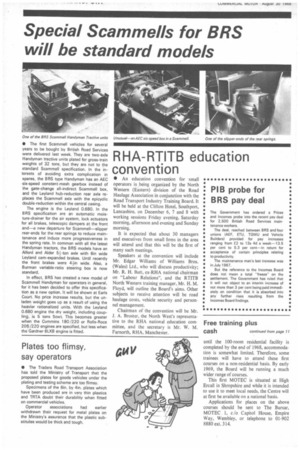Special Scammells for BRS will be standard models
Page 14

If you've noticed an error in this article please click here to report it so we can fix it.
• The first Scammell vehicles for several years to be bought by British Road Services were delivered last week. They are two-axle Handyman tractive units plated for gross-train weights of 32 tons, but they are not to the standard Scammell specification. In the interests of avoiding extra complication in spares, the BRS type Handyman has an AEC • six-speed constant-mesh gearbox instead of the gate-change all-indirect Scammell box, and the Leyland hub-reduction rear axle replaces the Scammell axle with the epicyclic double-reduction within the central casing.
The engine is the Leyland 0.680. In the BRS specification are an automatic moisture-drainer for the air system, lock actuators for all brakes, telescopic dampers at the front and—a new departure for Scammell—slipper rear-ends for the rear springs to reduce maintenance and induce more progressiveness in the spring rate. In common with all the latest Handyman tractors, the BRS models have an Alford and Alder 5!-ton axle with 6in wide Leyland cam-expanded brakes. Until recently the front brakes were 4-in wide. Also, a Burman variable-ratio steering box is now standard.
In effect, BRS has created a new model of Scammell Handyman for operators in general, for it has been decided to offer this specification as a new option. It will be shown at Earls Court. No price increase results, but the unladen weight goes up as a result of using the heavier rationalized units. With the Leyland 0.680 engine the dry weight, including coupling, is 5 tons 5cwt. This becomes greater when the Cummins 180/220 or Rolls-Roce 205/220 engines are specified, but less when the Gardner 6LXB engine is fitted.




















































































